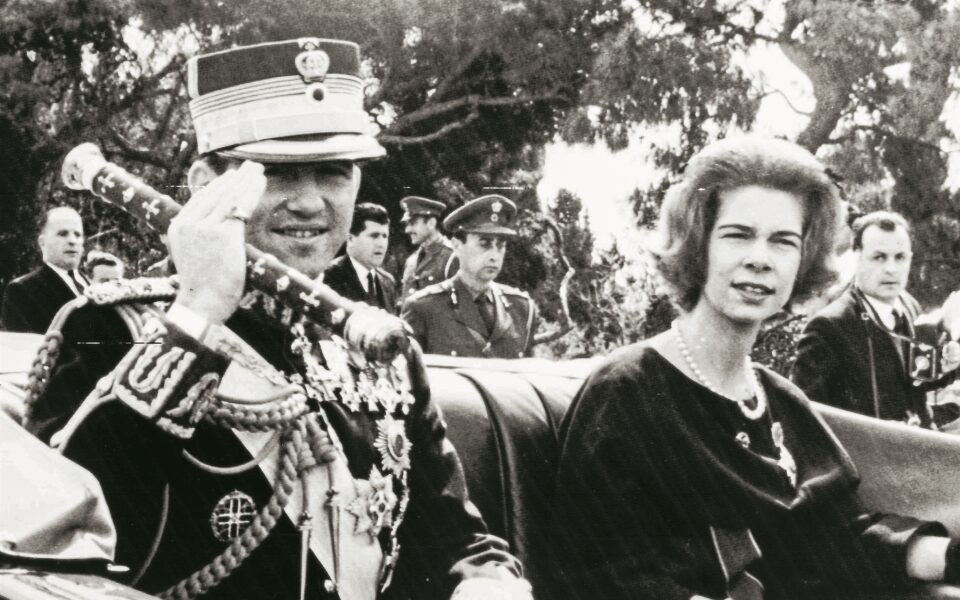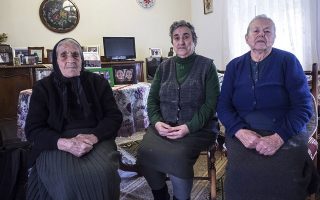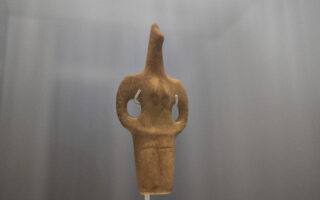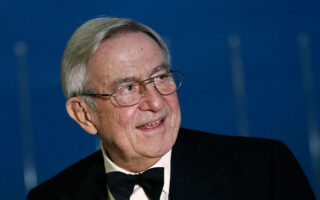Constantine II: The last king of Greece
His short reign that started in March 1964 until the monarchy’s abolition was associated with events that mortally wounded Greek democracy

The last king of Greece, Constantine II, died late Tuesday night, 100 years after the death of his grandfather, Constantine I, who died on January 11, 1923. Constantine was the last king of the dynasty that began with George I, who succeeded Otto in 1863 and remained king of Greece for the next 50 years.
Constantine was being treated in a private hospital in Athens when he died at the age of 82 after suffering a stroke. He was married to the former queen Anne-Marie of Denmark in 1964 and had five children: Alexia, Pavlos, Nikolaos, Theodora and Philip. A mild-mannered, polite and approachable man, Constantine was also one of the protagonists in the maelstrom of political developments in Greece in the 1960s.
He acceded to the throne in 1964 at the age of 23, but the historical changes along with his choices at critical moments of Greece’s history contributed both to his self-exile at the end of 1967, after clashing with the military junta that ruled the country at the time, as well as his defeat in the referendum of 1974. Since then he had lived in Rome, London and, for the last 25 years, in Greece, in the resort town of Porto Heli, southern Greece, and Athens.
A 5-year-old child, dressed in white shirt and shorts, waves his hand. He is on the warship that will take him to Greece, together with his two sisters, Sofia (who would later become queen of Spain) and Irene. It is the first image of the prince, from a small film made in 1946. The last king of Greece was born on Sunday, June 2, 1940 at 5.45 in the afternoon at his parents’ residence, Villa Psychiko, in the namesake suburb of Athens. His birth was announced to the people at about 6 p.m., and was celebrated with “a 101-gun salute from Mount Lycabettus in Athens, Piraeus and the naval stations of Salamis and Poros, the tolling of church bells, the horns of ships in the harbor and the illumination of the capital,” as noted by writer Kostas Stamatopoulos in the book “Diary of Queen Frederica,” published by Kapon Editions.
Constantine was baptized on July 18 in the ceremonial hall of the so-called New Royal Palace on Irodou Attikou Street (which today houses the Presidential Mansion, the official residence of the Greek president). During the first years of his life he did not live in Greece. Shortly before the Germans seized Athens on April 27, 1942, his family and that of his uncle, King George II, along with the administration of Emmanouil Tsouderos, and forces of the Royal Navy and Air Force, fled to Crete. George II remained on the island throughout the Battle of Crete and then fled to Egypt. Paul, Constantine’s father, along with his wife Frederica (previously of Hanover) and their two children, Sofia and Constantine, were evacuated to Egypt on April 30, 1941. They returned to Greece two years later.
The return
King George II returned to Greece following a plebiscite in 1946 that preserved the monarchy after the war. The royal family was reunited in Elefsis. Constantine, Sofia and Irene arrived in Greece a few days later. The first image that little Constantine saw as they approached the harbor was the Hellenic Naval Academy. The facade of the building had the sign of a crown and, according to the stories of the time, the child thought that these were the royal palaces. Just six months after his return, on April 1, 1947, King George II died of cardiac arrest. He was only 57. As he had no children of his own, Constantine’s father became king, making Constantine the crown prince.
Greece was at a crucial turning point in its civil war, which followed Greece’s liberation from German occupation. The British had handed over the responsibility of foreign aid to the Americans to prevent Greece from slipping behind the Iron Curtain.
The Cold War had just begun. The Greek throne served as a guarantee to foreign powers that the state which emerged from the breakup of the Ottoman Empire would operate according to rudimentary Western standards and not collapse into discord and anarchy. King Paul and Queen Frederica had to adapt this model to their time and they did. They played a catalytic role in promoting stable Greek-American cooperation, both during the civil war and in the years that followed. The palace and the American Embassy formed the stable axis on which political life revolved for the next 20 years – from 1947 to 1967. On the day of King George II’s death, Constantine became the crown prince and attended his uncle’s funeral, holding his father’s hand. King Paul I and the new royal family moved into the New Royal Palace.
The Greek throne was always viewed by foreign powers as a guarantee that the state which emerged from the breakup of the Ottoman Empire would operate according to rudimentary Western standards
The royal family underestimated the fact that the monarchy was on shaky political and historical ground. Today, only the portrait of Constantine I has remained in its original position. It is located at the end of the grand staircase, on the first floor of the Presidential Palace, as a historical “postscript,” a reminder of a certain time or perhaps as an enigma. The portrait of Constantine I still “observes” the occupants of the Presidential Palace. So far, no one has decided to remove the portrait of a king who played an important role in the National Schism – a series of disagreements between King Constantine I and Prime Minister Eleftherios Venizelos regarding Greece’s foreign policy in the period of 1910-1922 – who was loved and hated, who is buried in the grounds of the former palace of Tatoi, and whose impressive statue dominates the Pedion tou Areos park in central Athens. The portrait may still be in its original place but the monarchy has long become part of the country’s past. What factors led to such an impressive historical upheaval?
Konstantinos Karamanlis
As soon as Prime Minister Alexandros Papagos died in 1955, King Paul invited Konstantinos Karamanlis, then minister of public works and an MP for Serres, to form a government. The 1952 Constitution included a provision stating that “the king appoints and dismisses the prime minister and his ministers,” which enabled the monarch, with a rather loose interpretation of that provision, to “appoint” the prime minister he wanted.
Ten years later, in July 1965, the young King Constantine II decided to invoke the same constitutional provision which his father had used to choose Karamanlis, to install Stefanos Stefanopoulos as prime minister – a man his father had pushed aside in 1955. Stefanopoulos formed the infamous government of the defectors (a group of lawmakers who had defected from the ruling centrist government, an event still widely known in Greece as the “apostasy”), which eventually ended up being headed by caretaker premier, Panagiotis Kanellopoulos.
King Constantine’s decision to emulate his father’s action couldn’t possibly be simply the result of coincidence. It expressed perhaps a psychological urge for the son to prove to himself and others that he was worthy of his father, but also a palace mentality of interventions in the “flow of history.” It was a belief that the blue-blooded are supposed to have the “divine privilege” to intervene. But Constantine did not have the experience, the suspicion or the cynicism to understand the changes that were taking place, to act strategically, to think coldly. He was not arrogant, but he had the recklessness of youth and probably also the certainty of privileged children that no matter what happens they will remain the “chosen” ones. How did a young man with no apparent bad intentions manage to lose the crown just a few years after the monarchy had completed a century in Greece?
The clock started ticking for the monarchy when relations with Karamanlis, the natural leader of the right-wing National Radical Union (ERE), started souring. The stability of the Greek monarchy had always been dependent on the right and, of course, the Great Powers. Kanellopoulos – after the electoral defeat of 1963, the assumption of power by Georgios Papandreou’s Center Union, and Karamanlis’ self-imposed exile in Paris – had taken over the leadership of ERE, the party founded by Karamanlis as the successor party of the Greek Rally. Another useful detail is that Karamanlis did not leave for Paris after the electoral defeat of his party, but in June 1963, after his clash with the palace, following an intense disagreement over the official visit of Queen Frederica to London.
The ‘trivial’ reason
Frederica wanted the trip to go ahead and Paul agreed, but Karamanlis insisted that it be called off, arguing that on a previous visit to London two months earlier, the queen and her daughter Sofia had been lambasted as they came out of Claridge’s Hotel by a group of half a dozen protesters and the wife of Antonis Abatielos, a dockworker and communist union chief, who was under arrest in Greece at the time. Karamanlis later recounted how Constantine stopped him on the palace steps and demanded why he was going against his father’s will. “I speak with the king. You stay out of it,” Karamanlis responded as he stormed away from what would become the Presidential Mansion he presided over some 20 years later. Constantine said that no one at the palace could understand why this tiff had meant so much to Karamanlis. There had, of course, already been some friction over Princess Sofia’s dowry when she married Juan Carlos of Spain in 1962 and about the palace’s spending of public money. He eventually concluded that Karamanlis had been looking for a reason to quit in 1963, under pressure from growing popular discontent and the negative climate resulting from the two-year political battle with Georgios Papandreou, who refused to accept the result of the 1961 elections and insisted they were the result of voter intimidation and election fraud.
King at 24
Constantine had met Anne-Marie, the youngest daughter of King Frederick IX of Denmark, in Copenhagen in 1959 and they were engaged in the Danish capital in January 1963. Their arrival in Athens was marked by a reception at the palace and a visit to the Acropolis. Constantine was in no rush to become king. He wanted to study at Harvard and work at the United Nations and had told his father that he wanted to spend six months a year in the United States and the other six months in Greece. All that changed, however, when an Evangelismos Hospital surgeon informed the royal family that King Paul had been diagnosed with cancer.
Frederica was in the United States at the time and flew right back when she heard the news. Two British doctors were flown in to assist their Greek colleagues with the surgery, which was carried out at the royal summer residence of Tatoi, where an operating theater had been set up for the purpose. The surgery went well, but the king suffered a setback a few days later. The miraculous icon of the Virgin Mary was sent from the island of Tinos, but the king died on March 6, 1964. His final words, according to his son, were, “Tell the Greek people I love them and thank them.”
Constantine called Prime Minister Georgios Papandreou to inform him of his father’s passing. “Your Majesty, you must be sworn in without further delay,” Papandreou responded.
At the ceremony, the newly enthroned king addressed the Greek people, vowing to serve the nation and to protect the independent institutions of the republic with ceaseless vigilance. His marriage to Anne-Marie took place six months later, on September 18, 1964.
This is the first of a four-part series on Greece’s former king Constantine II, who died on Tuesday night, aged 82.





